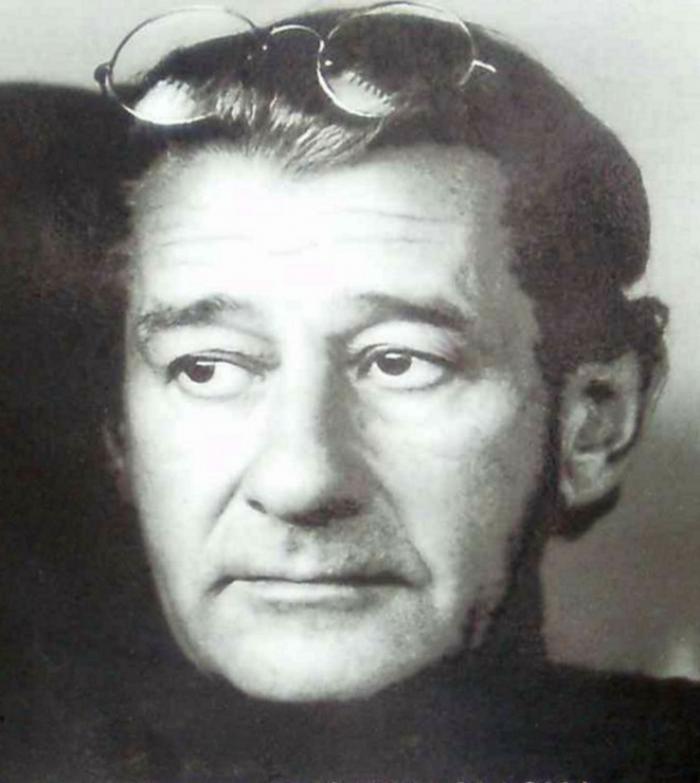Helmut Newton |

Helmut Neustaedter - Helmut Newton - German-Australian - Photographer.
Newton's studio - Flinders Lane, Melbourne: Helmut Newton and Henry Talbot Gallery.
Helmut Newton in Australia
1940: arrives in Australia and serves for five years in the Australian army. In 1946 becomes an Australian citizen.
1947: meets actress June Brunell, who poses as a model for him. They marry one year later.
1956: extended travels through Europe. In London acquires a one-year contract at British Vogue, which Newton quits after 11 months. Thereafter in Paris and return to Melbourne; contract with Australian Vogue.
Helmut Newton
The New York Times described him as a "prolific, widely imitated fashion photographer whose provocative, erotically charged black-and-white photos were a mainstay of Vogue and other publications."
Newton was born in Berlin, the son of Klara "Claire" (n©e Marquis) and Max Neustädter, a button factory owner. His family was Jewish. Newton attended the Heinrich-von-Treitschke-Realgymnasium and the American School in Berlin. Interested in photography from the age of 12 when he purchased his first camera, he worked for the German photographer Yva (Elsie Neuländer Simon) from 1936.
The increasingly oppressive restrictions placed on Jews by the Nuremberg laws meant that his father lost control of the factory in which he manufactured buttons and buckles; he was briefly interned in a concentration camp on Kristallnacht, 9 November 1938, which finally compelled the family to leave Germany. Newton's parents fled to Argentina. He was issued with a passport just after turning 18 and left Germany on 5 December 1938. At Trieste, he boarded the Conte Rosso (along with about 200 others escaping the Nazis), intending to journey to China. After arriving in Singapore, he found he was able to remain there, first briefly as a photographer for the Straits Times and then as a portrait photographer.
In 1948, he married June Browne, who performed under the stage name June Brunell. Later she became a successful photographer under the pseudonym Alice Springs.
In 1946, Newton set up a studio in fashionable Flinders Lane in Melbourne and worked on fashion, theatre and industrial photography in the affluent postwar years.
He shared his first joint exhibition in May 1953 with Wolfgang Sievers, a German refugee like himself, who had also served in the same company. The exhibition of 'New Visions in Photography' was displayed at the Federal Hotel in Collins Street and was probably the first glimpse of New Objectivity photography in Australia.
From 1940: Life in Australia
Newton was interned by British authorities while in Singapore and was sent to Australia on board the Queen Mary, arriving in Sydney on 27 September 1940. Internees travelled to the camp at Tatura, Victoria by train under armed guard. He was released from internment in 1942 and briefly worked as a fruit picker in Northern Victoria. In August 1942, he enlisted with the Australian Army and worked as a truck driver. After the war in 1945, he became a British subject and changed his name to Newton in 1946.
Helmut Newton's 1950 portrait of his wife June, modelling a "Hat of the Week" for Myer's Department Store.
In 1948, he married actress June Browne, who performed under the stage name June Brunell. Later she became a successful photographer under the ironic pseudonym Alice Springs (after Alice Springs, the town in Central Australia).
In 1946, Newton set up a studio in fashionable Flinders Lane in Melbourne and worked on fashion, theatre and industrial photography in the affluent postwar years. He shared his first joint exhibition in May 1953 with Wolfgang Sievers, a German refugee like himself, who had also served in the same company. The exhibition of 'New Visions in Photography' was displayed at the Federal Hotel in Collins Street and was probably the first glimpse of New Objectivity photography in Australia. Newton went into partnership with Henry Talbot, a fellow German Jew who had also been interned at Tatura, and his association with the studio continued even after 1957, when he left Australia for London. The studio was renamed 'Helmut Newton and Henry Talbot'.
Late 1950s: to London, Europe, a return to Australia
Newton's growing reputation as a fashion photographer was rewarded when he secured a commission to illustrate fashions in a special Australian supplement for Vogue magazine, published in January 1956. He won a 12-month contract with British Vogue and left for London in February 1957, leaving Talbot to manage the business. Newton left the magazine before the end of his contract and went to Paris, where he worked for French and German magazines. He returned to Melbourne in March 1959 to a contract for Australian Vogue.
Death
In his later life, Newton lived in both Monte Carlo and Los Angeles, California where he spent winters at the Chateau Marmont, which he had done every year since 1957. On 23 January 2004, he suffered a serious heart-attack while driving his automobile down Marmont Lane from the Chateau Marmont to Sunset Boulevard. He was taken to Cedars-Sinai Medical Center; doctors were unable to save him, and he was pronounced dead. His ashes are buried at the Städtischer Friedhof III in Berlin.
Technically, Helmut Newton is not a Melburnian but he spent some of his early years in Melbourne developing his style and craft, later becoming a world-renowned photographer we are happy to call a popular Melburnian.
❊ Address ❊
℅ Naarm
⊜ Flinders Lane, Melbourne 3001 View Map
❊ Web Links ❊
➼ Helmut Newton
➼ Helmut Newton: Australian years - slv.vic.gov.au
➼ www.wikipedia.org
➼ www.helmut-newton-foundation.org
Disclaimer: Check with the venue (web links) before making plans, travelling or buying tickets.
Accessibility: Contact the venue for accessibility information.
Update Page






